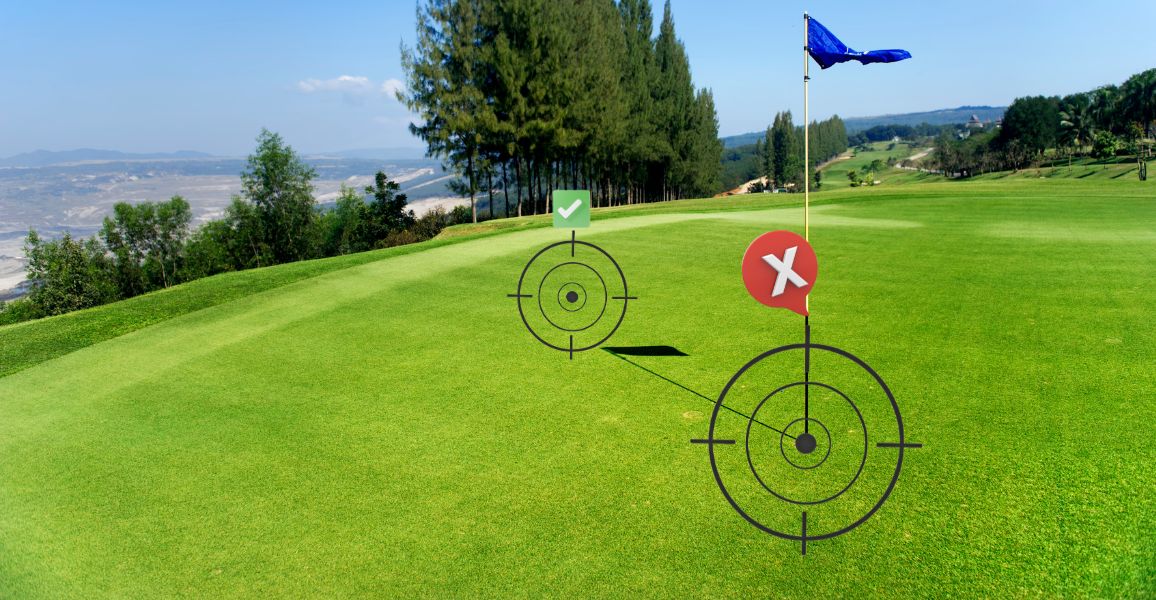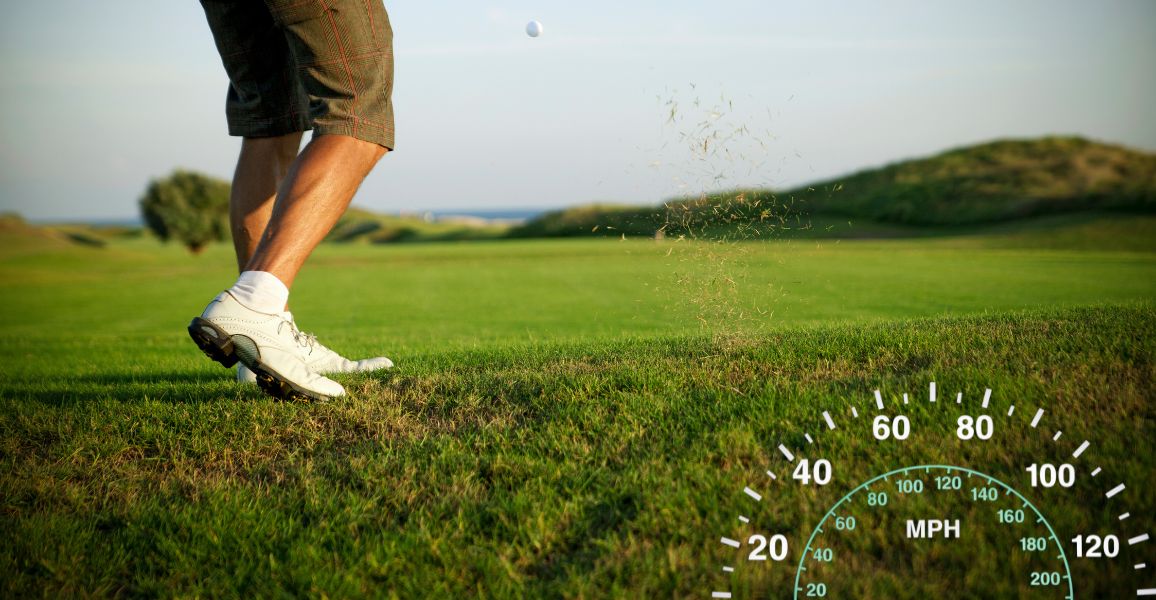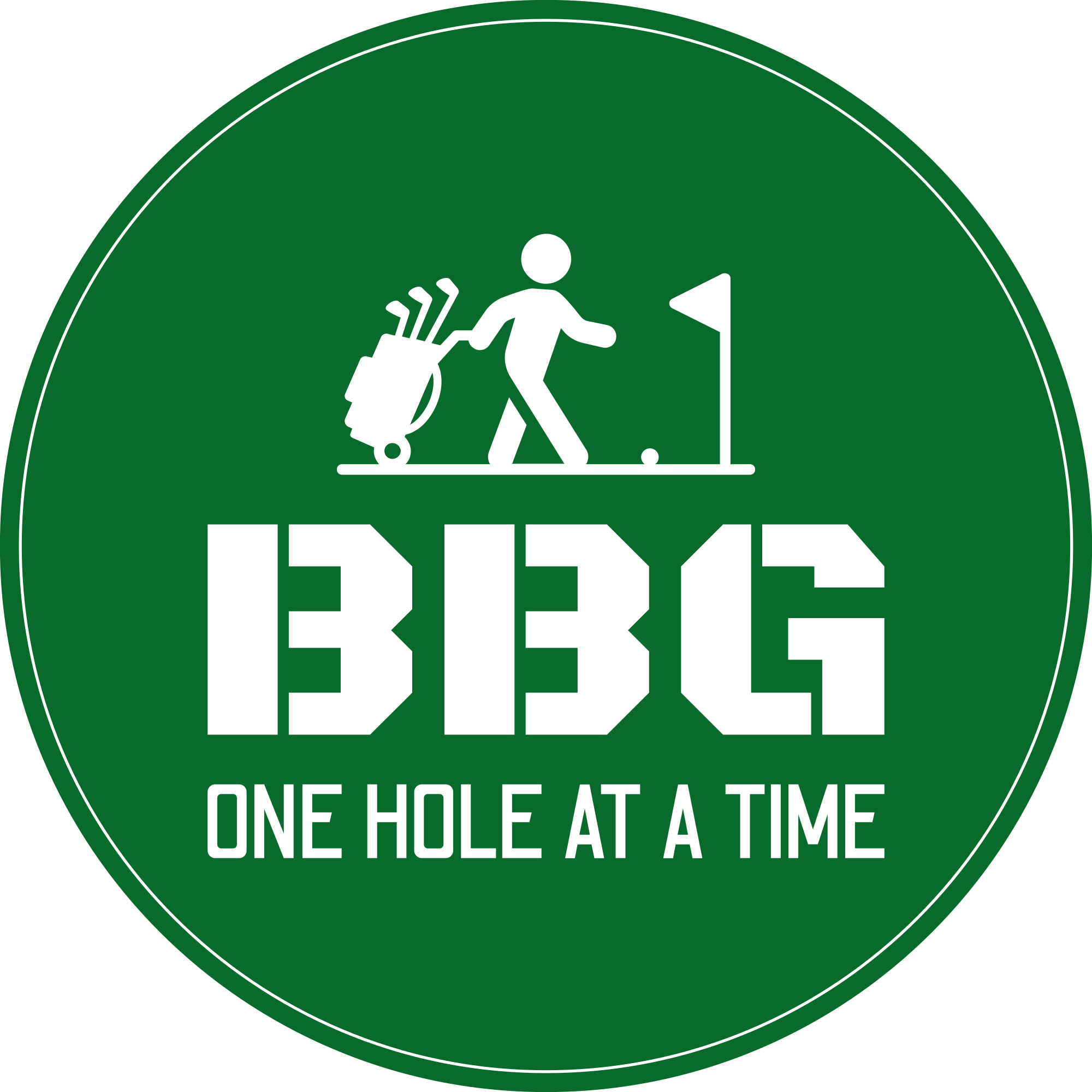The secret to golf is to turn three shots into two. – Bobby Jones
Becoming consistent when a wedge is placed in your hands is one way to achieve what the great Bobby Jones told us.
Instead of hitting your wedge onto the green and then two-putting, you should pitch on and have a makeable putt.
Doing this, you turn three shots into two more often, which all add up at the end of the round.
But how do you become better at approach shots?
Well, you need a hole tool bag of different shots, and the half-wedge shot is probably the most important to master.
Most golfers go to the driving range and may use all of their clubs, but if I were a betting man (which I am!), barely any golfers practice half shots.
This is crazy because 60%-65% of all shots on the golf course happen from within 100 yards of the hole.
Below, you will learn 6 tips that instantly improve your short game if applied in your next round.
Throw in a little practice on top of this information, and even if your putting game needs some improvement, you will shoot lower scores.
Half A Wedge Doesn’t Always Mean Half A Swing…
You can’t be blamed for thinking a half wedge shot means swinging halfway back, swinging through, and that’s all there is to it.
Although that is one way you can do it, a half-wedge shot can be achieved with any swing as long as you cover around half your usual distance.
For example, John Rahm has a technique of having an even shorter backswing but a ferocious downswing.
By doing this, he puts more spin on the golf ball, helping him zip it right to the hole, which is what Rahm does best.
You could have a full swing without any power, letting the golf club fall at the golf ball guided by your wet noodle arms.
Ultimately, it’s up to you and which swing you get the best results for.
Maybe try the wet noodle arm swing on the range first before you start skulling wedge shots all over the course!
Shift Your Weight Forward And Lean Back
The undervalued goal of golf is to gain consistency by removing all unnecessary movements during the golf swing.
When pitching, it’s such a short movement that doesn’t require power, which won’t require a weight shift so that you can keep most of your weight on the lead food.
Doing this lets you focus on the rest of the swing, knowing your lower body is precisely where it should be.
It’s the chipping setup from further out.
You don’t want 80-90% of our body weight on the lead leg. That’s a bit extreme.
Ideally, you should look for about 65% of your weight on that foot.
Although you want your weight stacked more on the lead foot, your spine/upper body should be angled in the opposite direction.
This would keep your body behind the golf ball, which is necessary if the club head will bottom out at the right time.
Pick A Spot On The Green… And Not The Hole

Hitting a half wedge means you’re close enough to the green to throw your ball to the pin.
When you’re this close, you need to pick a target on the green that will guide your ball to the hole.
It can be hard to tell sometimes, but look at the shape of the green and try to notice any big breaks that you should be aiming for or trying to avoid.
Aiming at the pin might be okay when the green is softer, but get into the habit of assessing your options, and you will find yourself with more tap-ins.
Use Your Larger Muscles For Half-Wedge Shots
Unless you’re unbelievably talented, you will get inconsistent results if you flick your wrists for every half-wedge shot you hit.
These small body parts or hinges can be challenging to control for most golfers.
Use your larger muscles or body parts, like your back and core muscles, for more consistent shots.
By just focusing on rotating your body, arms, and club together, you will find that your ball sprays less, and distance control will become easier.
This is because these larger muscles are easier to control than the ones in your wrists and hands.
Pick The Right Ball Position
Before playing with your ball position, ensure you’re comfortable with your stock shot and distance control.
Shifting your ball further up or back in your stance will change the ball’s flight and roll out on the green.
Moving your ball forward will result in a higher ball flight and less rollout when it lands on the green.
The opposite will happen if you move it back; the ball will have a lower flight and roll more when it hits the green.
This is why it’s essential to look at the green before your shot and pick what shot will give you the best chance at getting closer to the hole.
Maintain Speed Throughout Your Entire Swing

Many amateurs struggle with inconsistent half-wedge shots; the main culprit is that they don’t maintain a consistent speed.
They may take the club back fast and then decelerate on the downswing, or they start to slow only to accelerate through the ball.
Either way, they can make your consistency and distance control worse.
Keeping the same speed for all your half-wedge shots, you will be more consistent in your connection with the ball by making solid contact and the distances you hit.
Have Your Feet Closer Together
A tighter stance is ideal since you will be mainly swinging with your larger upper body muscles, and you won’t be making a full swing.
Typically, the longer the club you have, the wider your stance will become as you try to generate more swing speed and distance by shifting your weight.
Your short game is about something other than clubhead speed and power but control. Getting this control will let you pitch shots closer to the hole.How-To-Hit-Half-Wedge-Shpot
